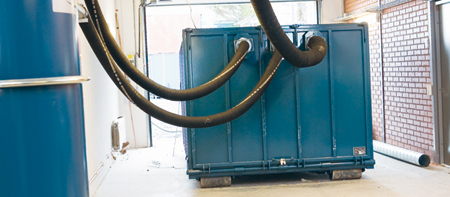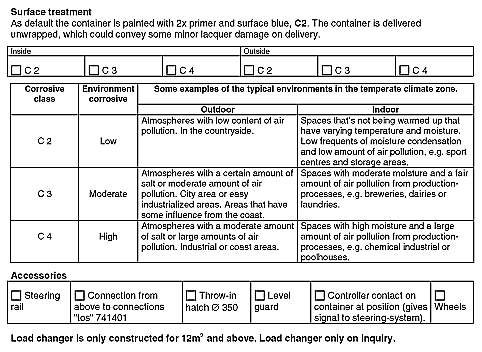Larger Containers Art nr Show models Hide models
 By installing inlet/outlet connections on larger containers (4-8 m3) an efficient inertial separator is built. Separation and containment of extracted waste directly in a closed container is a desirable handling method for a variety of reasons. Among these is that the system remains closed and that the handling of the waste can be done both rationally and economically.
By installing inlet/outlet connections on larger containers (4-8 m3) an efficient inertial separator is built. Separation and containment of extracted waste directly in a closed container is a desirable handling method for a variety of reasons. Among these is that the system remains closed and that the handling of the waste can be done both rationally and economically.
These containers can also be used as discharge arrangements for cyclones – direct connection from the separator mounted over the container. A vacuum waste container is an integral part of the extraction system and must be designed for the negative pressure.
Different regions and waste handlers will have different handling systems, the illustrations above show several different prevalent variations.
The exact type and dimensions of that type are often determined in cooperation with the contracted waste handler. The following factors will have a bearing on the selection of container type:
1) Tipping cost.
2) Tipping in a packer truck or removal.
3) Distance to tipping site.
4) Density and weight of the separated material.
5) Permits required for dumping of collected material (degree of hazard classification).
6) Time for removal of container and the need for two containers.
7) Physical placement of the container, is it accessible for the handling truck?
 United Kingdom
United Kingdom  Sverige
Sverige  Deutschland
Deutschland  Suomi
Suomi  Austria
Austria  United States
United States  .com
.com  France
France 




 01327 858002
01327 858002
